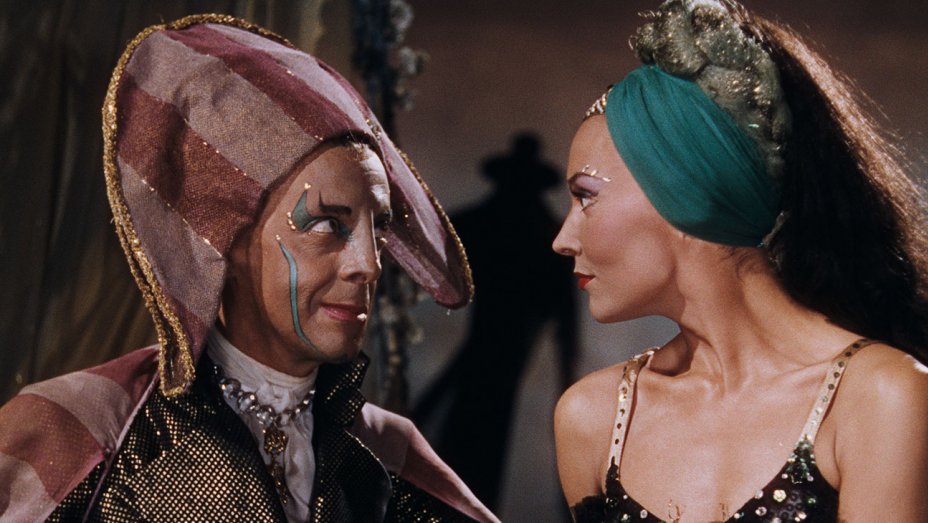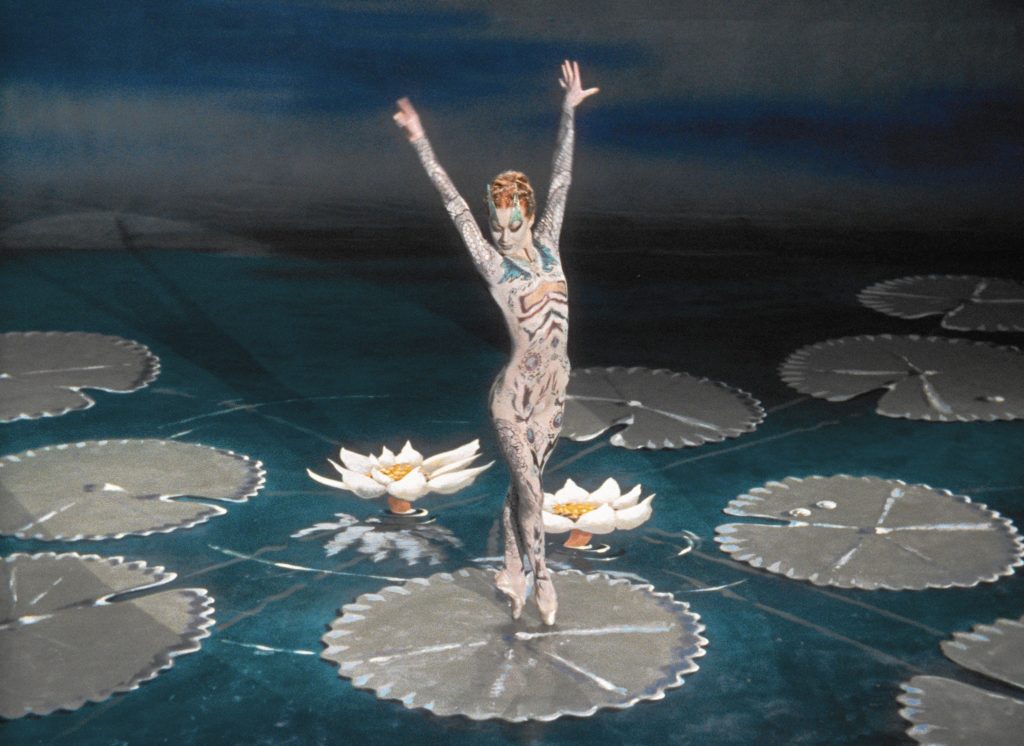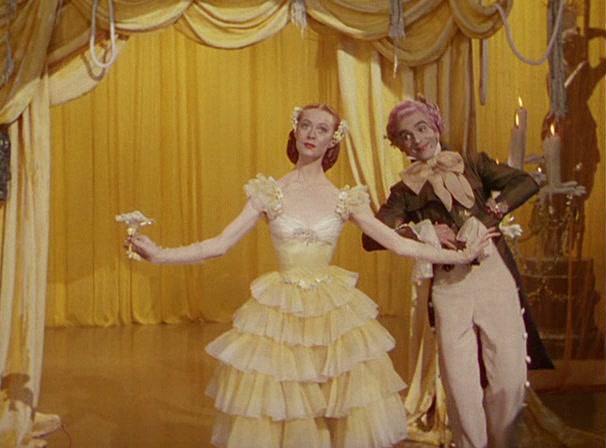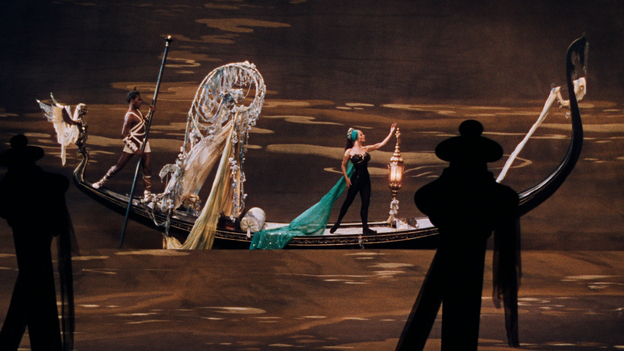The Tales of Hoffmann exists in defiance of the commonplace. Steeped in magic, bright with beauty, it explodes like a flare, dazzling you with colour and sound. You emerge dazed and longing to see it all over again.
Only Michael Powell and Emeric Pressburger could have made it. In the 1940s and ‘50s Powell and Pressburger, known collectively as the Archers, wrote, produced and directed a series of films that are among the most cherished in British cinema. They made taut character studies (The Small Back Room) and metaphysical romances (A Matter of Life and Death), mediations on art (The Red Shoes), religion (Black Narcissus) and British life (A Canterbury Tale). At the height of the Second World War they chose to make The Life and Death of Colonel Blimp, which tells the story of a decades-long friendship between an English soldier and a German one—and in doing so, dared to suggest not all Germans were Nazis. Their logo, an arrow hitting a bull’s eye, was apt: in their heyday the Archers’ films rarely missed the target.
Powell had long been interested in what he called a ‘composed film’. As he explains in his autobiography A Life in Movies, he wanted to make a film with a “sound-track which would be an organic whole of dialogue, sound effects, and music, very much in the way that an opera is composed”. He experimented with the idea in Black Narcissus and again in the ballet sequence in The Red Shoes, which begins as a regular stage performance and becomes a glimpse into a ballerina’s mind as she dances. The Tales of Hoffmann plays as if the Archers had extended the ballet over the length of an entire film. An adaptation of Offenbach’s opera, the score was recorded before filming and scenes edited to the rhythms of the music—the apotheosis of the composed film. There is no dialogue. Since most of the onscreen performers were dancers—several had previously appeared in The Red Shoes—none of them do their own singing, save Ann Ayars as Antonia and Robert Rounseville as Hoffmann.
The Tales of Hoffmann concerns the young poet Hoffmann (Rounseville). He loves Stella (Moira Shearer), a ballerina, and she reciprocates, sending him a note asking him to meet her after a performance. The note is intercepted by his rival, Councillor Lindorf (Robert Helpmann, the film’s recurring villain), who watches Stella hungrily from backstage. Disheartened Hoffmann retreats to a nearby tavern during the intermission and tells the assembled crowd the stories of three loves he has lost. A friend once told me she thought the film was about the beauty which exists even in a failed relationship. She’s right. But what frustrated me was how little Hoffmann learned from one tale to the next.
The first story takes place in Paris and finds Hoffmann a young student falling in love with the beautiful automaton Olympia (Moira Shearer). Shearer, a living, dancing flame, made her film debut as the star of The Red Shoes and, to the sorrow of movie lovers, only a handful of films afterward. For me, seeing her in anything is an event. Olympia is a clockwork facsimile of a woman and Shearer moves with horological precision, dancing en pointe, suddenly stiffening when Olympia needs to be wound up. At times her lip movements aren’t synchronised with the voice we hear, adding to Olympia’s vaguely inhuman quality. Hoffmann’s illusions are shattered when the vengeful Dr. Coppélius (Robert Helpmann) attacks her, tearing her body to pieces. The close-up of her severed head on the ground, still blinking, is the stuff of nightmares.
The second tale is set in Venice. Hoffmann, now a man of the world (and sporting a pretentious goatee to prove it) falls under the spell of Giulietta (Ludmilla Tchérina), a sinuous courtesan. Her master Dapertutto (Helpmann) is a demonic sorcerer who steals shadows and reflections; Helpmann’s eyes seem wide enough to devour all Venice. The tale opens with the famous ‘Barcarolle’, the Archers transforming the familiar into the sublime. Dapertutto and Giulietta glide into view on a gondola. She looks into the water and sees her reflection singing to her, then sings in turn, forming the duet. So much of Hoffmann’s world is strange, peopled with phantoms and puppets who occupy stylized sets, that Giulietta’s tale, which fully embraces magic, paradoxically seems the most real. Venice is a dark and gaudy Carnival with gondolas like coffins and palazzos painted infernal red. Powell and Pressburger have a man walk through a mirror and turn molten wax into jewels with a caress. Hoffmann surrenders to Giulietta and Rounseville soars: “tongues of fire surround me” he sings, even as they consume him. The fever dream that follows includes a duel with Giulietta’s former lover Schlemil (Léonide Massine), whose anguish is so visceral it’s hard to shake.
Sadly the last tale almost breaks the film’s spell. Hoffmann follows his love Antonia (Ann Ayars), who is dying of consumption, to a Greek island. Antonia longs to sing on stage as her mother once did. Her father and Hoffmann forbid it. There is much singing and wringing of hands. There is almost no dancing and the film feels as if it has been shackled to a 10-tonne weight.
Thankfully the feeling doesn’t last. The Tales of Hoffmann transports viewers to a different plane, a realm of illusion, colour, music and dance. Long after the tale is over the images linger: a gondola scudding through clouds; a woman dancing amid flames; a man disappearing in a shower of dust.




Leave a Reply